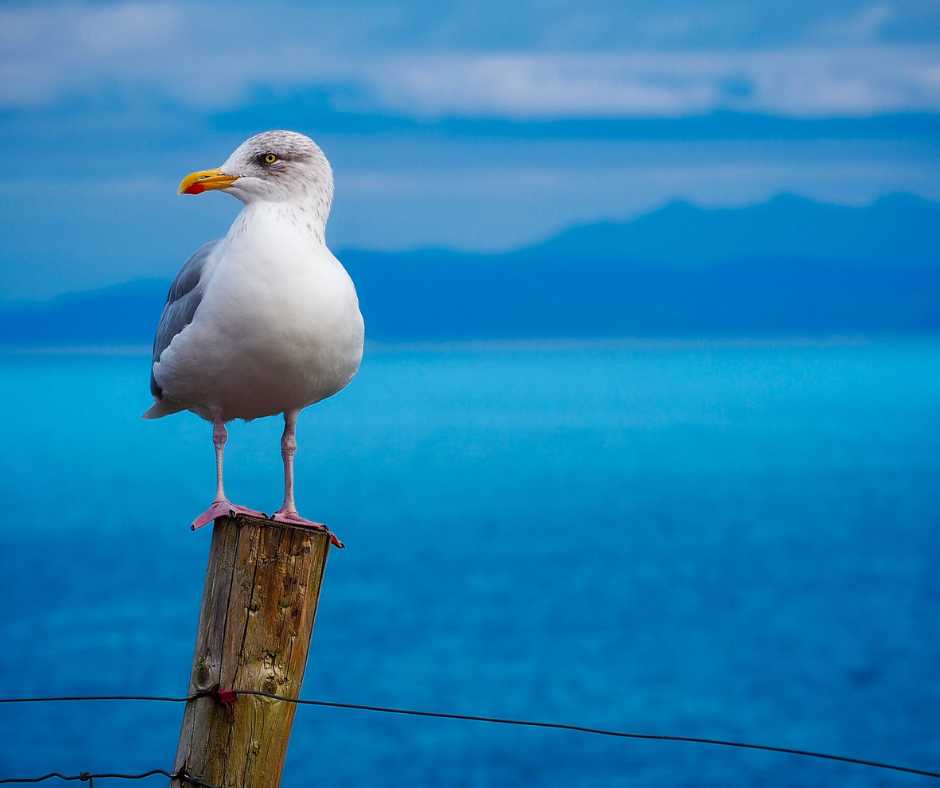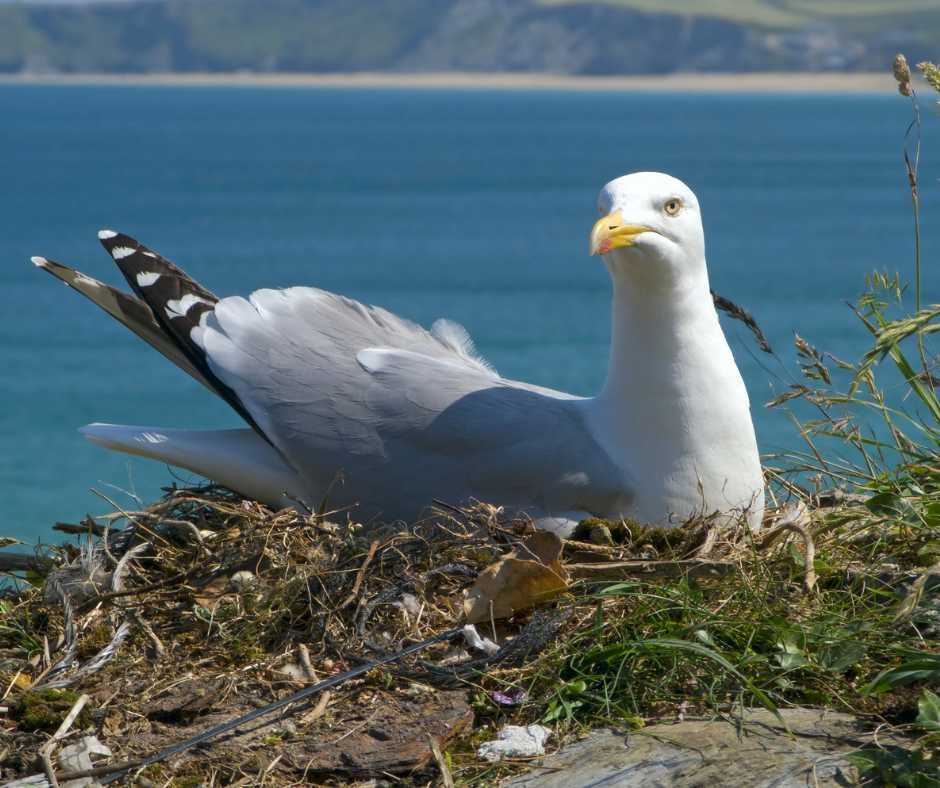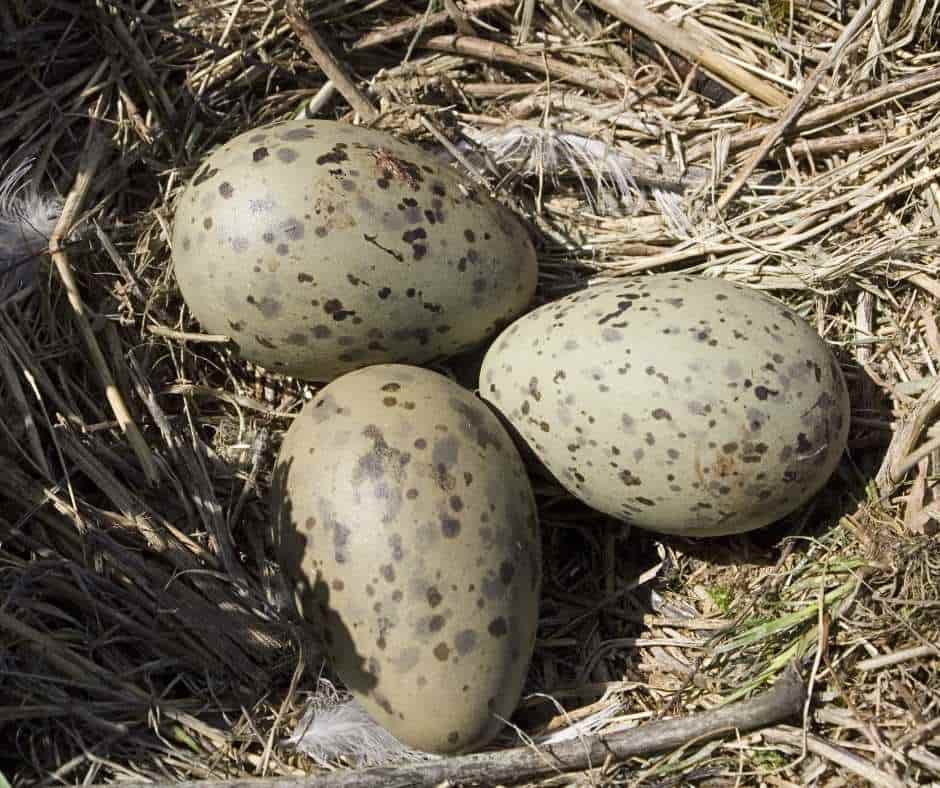Seagulls are birds we often see near the ocean and in cities. They have interesting ways of making their homes and taking care of their babies, which many people don’t know much about.
Even though seagulls are known for taking food from different places, the way they raise their young is really special and smart.
This ‘seagull nesting’ article is for anyone who loves birds or wants to learn more about how seagulls live, make nests, and survive. Let’s dive into the world of seagulls and discover some cool things about them!
| Aspect | Description |
| Species Variety | Highlights the diversity among seagull species, ranging from small to large gulls, each with unique nesting habits. |
| Nesting Sites | Describes various nesting sites used by seagulls, including cliffs, beaches, urban rooftops, and islands. |
| Nesting Materials | Details the materials seagulls use for nest construction, such as twigs, grass, and even artificial items. |
| Egg Characteristics | Provides information on egg size, color, and clutch size, which vary among different seagull species. |
| Incubation Period | Indicates the duration of egg incubation, which is a shared responsibility between male and female gulls. |
| Chick Development | Outlines key stages in the development of seagull chicks from hatching to fledging. |
| Dietary Habits | Briefly describes the diet of seagulls during the nesting period, emphasizing the importance of location and species. |
| Conservation Status | Summarizes the conservation status of seagulls, highlighting the impact of human activity and environmental changes. |
Understanding Seagull Species and Distribution
Seagulls are part of a big bird family called Laridae, and there are many different types of seagulls. Each kind has its special way of living in different places. Some seagulls are small, like the Little Gull, while others are big and strong, like the Great Black-backed Gull.
These seagulls can be found in many different places around the world. Knowing where they live helps us understand how they make their nests.
For example, some seagulls like to nest on quiet cliffs, while others have learned to live and nest in busy cities. It shows how seagulls can adapt to many different environments.

Selecting the Ideal Nesting Site
Choosing where to build a nest is a very important decision for seagulls. They have to think about being safe, finding food easily, and what the place is like.
Some seagulls, like the Herring Gull, make their nests on the ground in quiet places like beaches or islands. But other seagulls, like the Lesser Black-backed Gull, are okay with making nests on rooftops in cities.
It shows that seagulls are really good at adapting to different places and are smart in finding the best spots to raise their babies.
Nesting Season: Timing and Environmental Factors
Seagulls usually build their nests in the spring and summer. But when they start nesting depends a lot on where they live and what kind of seagull they are.
For example, in cold places like northern Alaska, seagulls wait until later in the spring to start nesting when the snow has melted. But in warmer areas, they might start making their nests as early as March.
The time they choose to nest is important because it also has to do with when they can find enough food for their baby chicks to survive and grow.

Comparison of Coastal vs. Inland Seagull Nesting Habits
Seagulls are amazing birds that can live in many different places, from rocky coastlines by the sea to busy cities. They are really good at changing their ways to fit where they live, especially when it comes to making their homes.
Seagulls that live near the ocean have their special behaviors and ways of doing things that work well for life by the sea. On the other hand, seagulls that live in cities or near lakes and rivers have different habits that help them in those places.
By looking at how these seagulls live differently, we can see how clever they are at living well in all sorts of places. Let’s explore these variations more closely:
| Feature | Coastal Seagulls | Inland Seagulls |
| Typical Nesting Sites | Cliffs, rocky islands, sandy beaches | Urban rooftops, inland water bodies |
| Diet | Mainly fish and marine invertebrates | Insects, small rodents, human waste |
| Nesting Material | Seaweed, driftwood, pebbles | Twigs, grass, artificial materials |
| Social Behavior | Large colonies, often with mixed species | Smaller colonies, more territorial |
| Adaptation to Environment | High tolerance for saltwater exposure | Adapted to varied inland conditions |
| Human Interaction | Limited except in tourist areas | More frequent due to urban proximity |
Intricacies of Nest Construction
The architecture of seagull nests ranges from simple scrapes in the ground to more elaborate structures. Using materials like twigs, grass, and even human-made debris, seagulls showcase remarkable resourcefulness.
The nest’s design is often a reflection of the surrounding environment and the specific needs of the species. For example, the Black-legged Kittiwake constructs its nest on cliff ledges using mud and vegetation, creating a sturdy platform in a seemingly precarious location.
Breeding Rituals and Pair Bonding
The time when seagulls have their babies is really interesting because they do a lot of special things to become good partners. They do stuff together, like flying in sync and helping each other clean their feathers.
It’s not just about finding a partner; it’s about creating a strong team to take care of their future baby birds. Seagulls have a cool social life that we might not notice unless we look closely. These activities show how smart and social they are.
Egg Laying and Characteristics
Seagull eggs are amazing at hiding! They have speckled patterns that help them blend in really well with where they’re laid. Usually, a seagull will lay about 1 to 3 eggs, but it can be different for each type of seagull.
The way the eggs look – their size, color, and how many there are – tells us a lot about how each kind of seagull has learned to survive over time. It’s all about making sure each egg has a good chance to grow into a healthy chick.
The Incubation Process
Incubation is a shared duty in the world of seagulls, with both parents taking turns to warm the eggs. This period can last from three to five weeks, depending on the species and environmental conditions.
The shared incubation not only signifies the shared investment in the offspring but also allows both parents to forage, ensuring they remain healthy and capable of providing for the chicks upon hatching.
Hatching and Early Days
The hatching of seagull eggs marks the beginning of a critical phase in the life cycle. Seagull chicks are semi-precocial, meaning they are relatively mature and mobile from the moment they hatch.
However, they are still dependent on their parents for warmth, protection, and food. The early days are fraught with danger, and parental vigilance is key to the survival of these vulnerable chicks.

Growth and Development of Young Gulls
Watching a baby seagull grow up into a young bird ready to fly on its own is amazing. In just a few weeks, these little chicks grow quickly. They get their feathers and start learning important things they need to live, like finding food and getting around in their world.
Mom and Dad seagulls play a big part in teaching them during this time. It’s not only about getting bigger and stronger; it’s also about learning how to be a good seagull and how to take care of themselves when they’re all grown up.
Challenges in Seagull Nesting
Seagulls face a lot of tough situations when they make their nests. They have to watch out for dangers like foxes and big birds that might harm them. They also have to deal with problems caused by people, like losing their natural homes and pollution.
To handle these problems, seagulls have come up with smart ways to stay safe. They might build their nests in hard-to-reach places or defend their homes strongly. Knowing about these challenges helps us see how tough and smart seagulls are in dealing with them.
Conservation Efforts and Human Interaction
Some types of seagulls do really well living in cities, but others are having a hard time because of problems like too much fishing, pollution, and changes in the weather. The way people act can really help or hurt these birds.
If we protect the places where they live and are careful about how we throw things away, we can make a big difference in keeping seagulls safe and healthy.

Fascinating Facts about Seagull Nesting
Seagull nesting is full of cool facts that are really interesting. Did you know that some seagulls have a sneaky habit called ‘kleptoparasitism’?
This means they sometimes steal food from other birds or animals. Also, seagulls are great at talking to each other. They have their way of making sounds and using body movements to communicate, especially when it’s nesting time.
They use these sounds and moves to share different messages, like when they’re finding a mate or even when they’re warning about danger.
Observing Seagull Nesting Responsibly
For bird enthusiasts, observing seagull nesting offers a window into their world. However, it is crucial to do so responsibly. Disturbing nesting seagulls can lead to abandonment of the nest or chicks, causing undue stress to the parents.
Maintaining a safe distance, using binoculars or cameras with zoom lenses, and respecting wildlife guidelines ensure a respectful and ethical bird watching experience.
People Also Asked
What is the average lifespan of a seagull?
The average lifespan of a seagull is around 10 to 15 years in the wild, though some individuals can live up to 20 years or more.
Can seagulls recognize individual humans?
Yes, seagulls can recognize and remember individual humans, especially if they have had repeated interactions or experiences, whether positive or negative.
How do seagulls adapt to urban environments for nesting?
Seagulls are smart when it comes to living in cities. They make their nests on buildings and other structures instead of in more natural places. They’re also good at finding food in the city, like eating scraps and leftovers that people throw away. It shows how seagulls can change the way they live and find food to fit in with city life.
What are the main threats to seagull populations today?
The main threats include habitat loss, pollution, climate change, and human disturbances, along with issues like overfishing that affect their food supply.
How do seagull nesting habits differ between coastal and inland species?
Seagulls that live near the coast usually make their nests on cliffs and islands, and they mostly eat things from the sea. But seagulls that live more inland, like in cities or near lakes and rivers, often build their nests on buildings or other places in town.
These seagulls eat a mix of different foods, like bugs and food that people leave out. So, depending on where they live, seagulls have different kinds of homes and diets.
Wrap Up
Seagull nesting demonstrates the remarkable adaptability and resilience of these birds, often misunderstood by many. The careful selection of their nesting sites and the dedicated way they care for their young are key aspects of their intriguing bird life.
Understanding seagull nesting is crucial as we share our spaces with them. It’s not about coexisting; it’s about appreciating their significant role in nature and recognizing the extraordinary ways they adapt to different environments.

